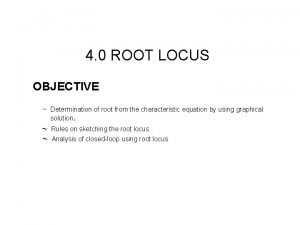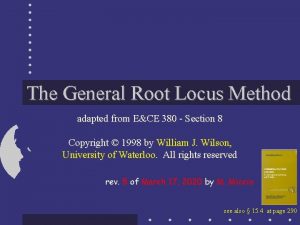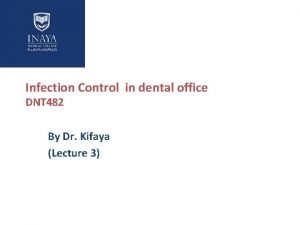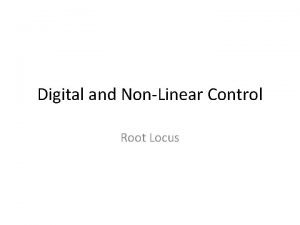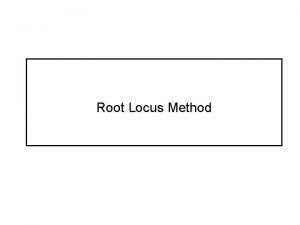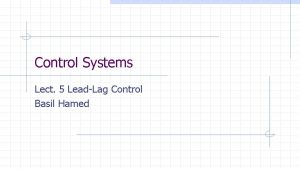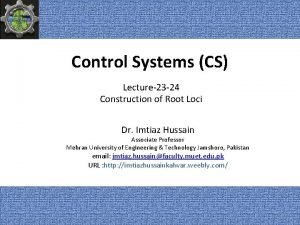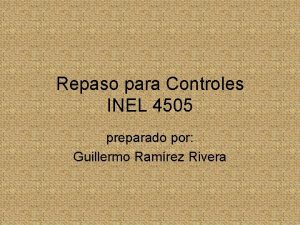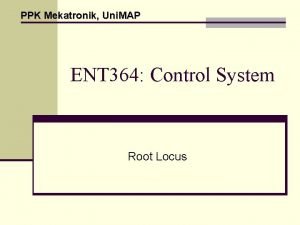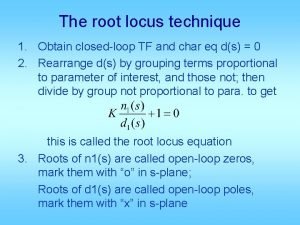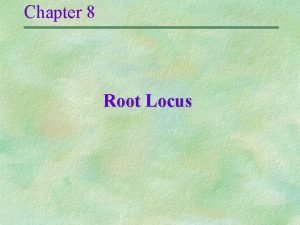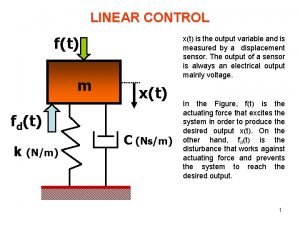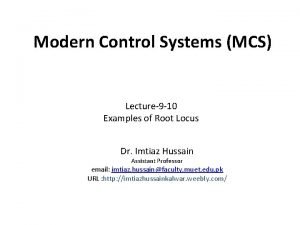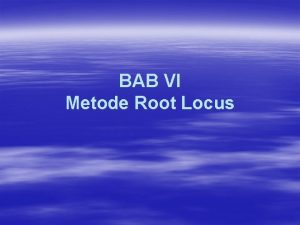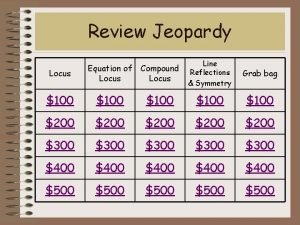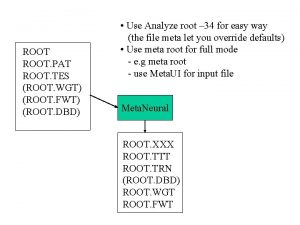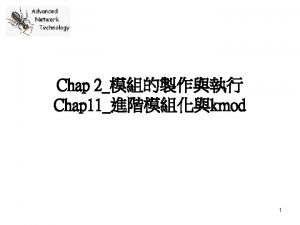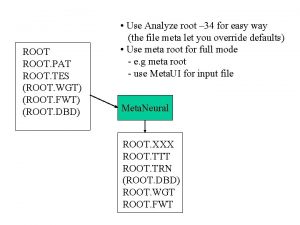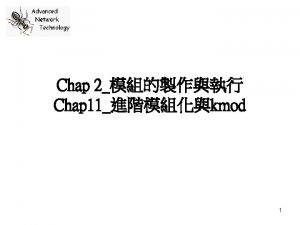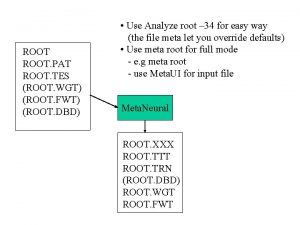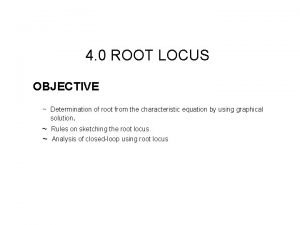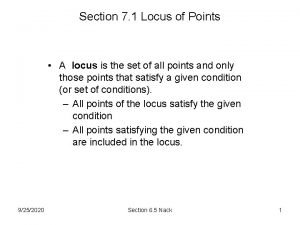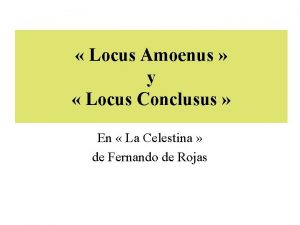Lecture 19 Root Locus Continued 2 Detailed root
















- Slides: 16

Lecture 19: Root Locus Continued 2. Detailed root locus examples ME 431, Lecture 19 1. Angle and magnitude condition review 1

• The root locus is a plot of how the closed-loop poles move for different values of a parameter K • The root locus can be drawn based on the openloop transfer function ME 431, Lecture 19 Root Locus Review 2

Root Locus Review Therefore, any point s on the root locus must satisfy the following two relations for some value of K • Angle Condition • Magnitude Condition • Which translates to: • Which implies that: from OL zeros OL poles branches of the root locus start at open-loop poles and end at open-loop zeros

1. Locate OL poles and zeros in the s-plane 2. Determine root locus on the real axis 3. Approximate the asymptotes of the root locus 4. Approximate break-away and break-in points 5. Determine angles of departure and arrival 6. Find Imaginary axis crossings ME 431, Lecture 19 Rules for Drawing the Root Locus 4

Detailed Example • Plot the Root Locus for the following system STEP 1: Locate open-loop poles and zeros

Detailed Example (continued) (branches start at OL poles and end at OL zeros) Im Re

Step 2 Determine root locus on real axis (use angle condition and recall angle from conjugate pairs cancel) in general, branches lie to the left of an odd number of poles and zeros

Step 3 Approximate asymptotes # of asymptotes = # of zeros at infinity one zero at infinity two zeros at infinity three zeros at infinity four zeros at infinity

Step 4 In general, occur when branches come together • Break-aways tend to occur between poles on real axis • Break-ins tend to occur between zeros on real axis (including zeros at “infinity”) ME 431, Lecture 19 Approximate break-away/break-in points (this root locus does not have any) 9

Step 5 Determine angles of departure/arrival use angle condition to test points around poles (departure) and around zeros (arrival)

Step 6 Find imaginary axis crossings points on imag axis have zero real part, s = jω sub s = jω into and solve for ω and K

Step 6 (continued) Can use this approach to find gains to achieve other closed-loop pole locations (substitute s = -σ ± jω)

Detailed Example #2 • Plot the Root Locus for the system with open-loop transfer function

Detailed Example #2 (continued) Im Re

Detailed Example #2 (continued)

Detailed Example #2 (continued)
 Root-locus techniques
Root-locus techniques The locus rule
The locus rule Root locus plotter
Root locus plotter Standard 3 infection control
Standard 3 infection control Root locus
Root locus Design via root locus
Design via root locus What is root locus in control system
What is root locus in control system Lag lead compensator in control system
Lag lead compensator in control system Construction of root loci
Construction of root loci Root locus definition
Root locus definition Root locus departure angle
Root locus departure angle Root-locus techniques
Root-locus techniques Departure angle root locus
Departure angle root locus Root locus examples
Root locus examples Root locus departure angle
Root locus departure angle Fissura palpebra
Fissura palpebra 01:640:244 lecture notes - lecture 15: plat, idah, farad
01:640:244 lecture notes - lecture 15: plat, idah, farad

